If you’re a plant parent, you know the feeling of excitement when you bring home a new plant. But sometimes, that feeling quickly turns to disappointment when your plant doesn’t seem to be growing. If you’re struggling with a Pothos that isn’t growing, you’re not alone. In this article, we’ll explore 10 possible causes of your Pothos not growing – and solutions for each one.
Reasons Why Your Pothos Isn’t Growing
Move your pothos to a brighter spot in the room, and it should start to grow. One of the most common reasons why your pothos isn’t growing is because it’s not getting enough light. Pothos need bright, indirect sunlight to thrive. If your pothos is placed in a dark corner of the room, it’s not going to get the light it needs to grow.
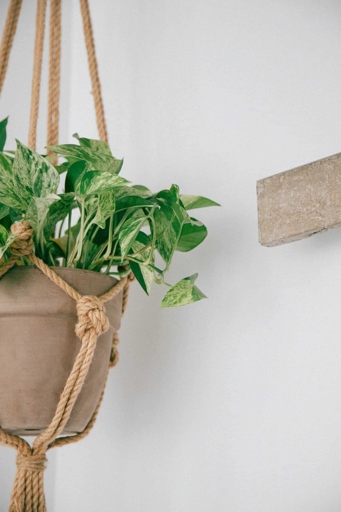
Pothos like to grow in moist, well-drained soil. If the soil is too dry, the plant will start to wilt. Water your pothos regularly, and make sure the soil is moist but not soggy. Another reason why your pothos isn’t growing could be because the soil is too dry.
If you follow these tips, your pothos should start to grow. Finally, your pothos may not be growing because it’s not getting the nutrients it needs. Pothos are heavy feeders, so they need to be fertilized regularly. Use a balanced fertilizer, and fertilize your pothos every two weeks during the growing season.
Dormancy
While dormancy is not harmful to plants, it can be frustrating for gardeners who are used to seeing their plants grow rapidly. Dormancy is a natural process that allows plants to rest and conserve energy. There are a few things that can cause a pothos to go into dormancy, including: It typically occurs in the winter months when there is less sunlight and cooler temperatures. One of the most common reasons for a pothos not growing is dormancy.
-Too much or too little water: Overwatering can cause the roots to rot, while underwatering can stress the plant and cause it to go into dormancy.
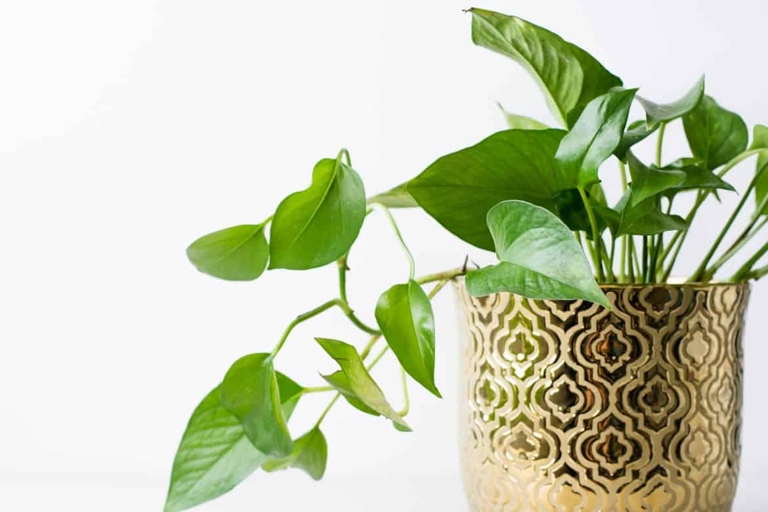
-Temperature: Cooler temperatures can cause a pothos to go into dormancy.
-Lack of light: If a pothos is not getting enough light, it may go into dormancy.
-Fertilizer: Too much or too little fertilizer can cause a pothos to go into dormancy.
There are a few things that gardeners can do to prevent dormancy, including:
-Watering regularly: Watering a pothos regularly will help it to avoid stress and prevent it from going into dormancy.
-Providing adequate light: Giving a pothos enough light will help it to grow and avoid dormancy.
-Fertilizing properly: Fertilizing a pothos properly will help it to get the nutrients it needs and prevent dormancy.
Lack of Light
If your plant is not getting enough light, it will start to yellow and the leaves will become smaller. If your pothos isn’t growing, it could be due to a lack of light. Pothos need bright, indirect light to thrive. You can solve this problem by moving your plant to a brighter location.
Lack of Nutrients
The leaves of the plant will begin to yellow and the plant will stop growing if it isn’t getting the nutrients it needs. One of the most common reasons for pothos not growing is a lack of nutrients.

Another is to add a specific nutrient that the plant is lacking. There are a few different ways to solve this problem. For example, if the plant is lacking in nitrogen, you can add a nitrogen-rich fertilizer. One is to fertilize the plant with a balanced fertilizer that contains all the nutrients the plant needs.
If you suspect that a lack of nutrients is causing your pothos to not grow, you can try one of these solutions and see if it makes a difference.
Why Is My Pothos Losing Leaves?
Finally, pests can also cause a pothos to lose leaves. If your pothos is not getting enough light, the leaves will start to turn brown and drop off. Another reason for leaf loss is insufficient light. Pothos need bright, indirect light in order to thrive. One of the most common reasons for a pothos to lose leaves is due to improper watering. If you see any pests on your pothos, such as aphids or mealybugs, be sure to treat them immediately. If you’re overwatering your pothos, the leaves will start to turn yellow and drop off.
Overwatering
If your pothos is not growing, it could be due to overwatering. Let the soil dry out between watering. If you think you are overwatering your pothos, cut back on the amount of water you are giving it. Overwatering is one of the most common problems with pothos plants. The leaves of the plant will start to yellow and the plant will stop growing.
Underwatering
The leaves of the plant will start to turn yellow and the stems will become limp. Stick your finger into the soil to see if it is moist or dry. This means that the plant is not receiving enough water and its roots are not able to absorb the moisture they need. One of the main reasons that pothos plants stop growing is due to underwatering. Another way to tell if your plant is underwatering is if the soil is dry to the touch. If you see these signs, it is important to water your pothos plant immediately. If it is dry, then your plant needs water.
Correct Watering Procedure
One of the most common problems with pothos is incorrect watering. The best way to water a pothos is to allow the top layer of soil to dry out before watering again. Overwatering is the number one cause of death for this plant, so it’s important to be careful not to give it too much water. This plant does not like to be soggy, so make sure that you are not leaving it sitting in water.
If the plant is not getting enough water, it will start to wilt and the leaves will turn yellow. If the problem persists, you may need to repot the plant into a pot with better drainage. Underwatering can also be a problem for pothos. If you think your pothos is not getting enough water, start by watering it more frequently.
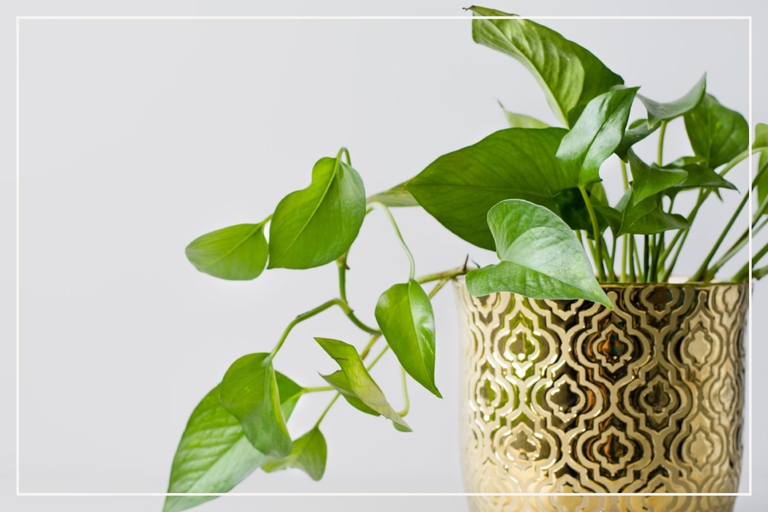
In general, pothos like to be in a humid environment. To increase the humidity around your pothos, you can mist the leaves with water or put the pot on a tray of pebbles and water. If the air in your home is too dry, the leaves of the plant will start to turn brown and crispy.
Improper Nutrients
Improper nutrients is one of the leading causes of pothos not growing. If your pothos isn’t growing, it could be a lack of nutrients.
There are a few things you can do to fix this. First, check the soil to see if it’s too dense. If it is, add some perlite or sand to loosen it up.
A good rule of thumb is to fertilize every two weeks during the growing season and every month during the winter. Next, make sure you’re fertilizing your pothos regularly.
If you think your pothos is getting enough light, but it’s still not growing, it could be a lack of nutrients. Improper nutrients is one of the leading causes of pothos not growing.
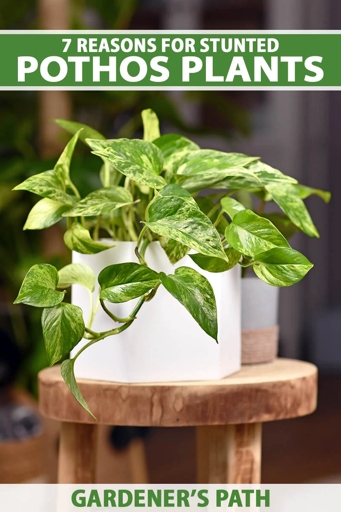
There are a few things you can do to fix this. First, check the soil to see if it’s too dense. If it is, add some perlite or sand to loosen it up.
A good rule of thumb is to fertilize every two weeks during the growing season and every month during the winter. Next, make sure you’re fertilizing your pothos regularly.
If you think your pothos is getting enough light, but it’s still not growing, it could be a lack of nutrients. Improper nutrients is one of the leading causes of pothos not growing.
There are a few things you can do to fix this. First, check the soil to see if it’s too dense. If it is, add some perlite or sand to loosen it up.
A good rule of thumb is to fertilize every two weeks during the growing season and every month during the winter. Next, make sure you’re fertilizing your pothos regularly.
Temperature Stress
The plant will also stop growing. If the temperature drops too low, the leaves of the plant will turn brown and drop off. Pothos plants are tropical plants that thrive in warm, humid conditions. However, they can also tolerate some temperature stress.
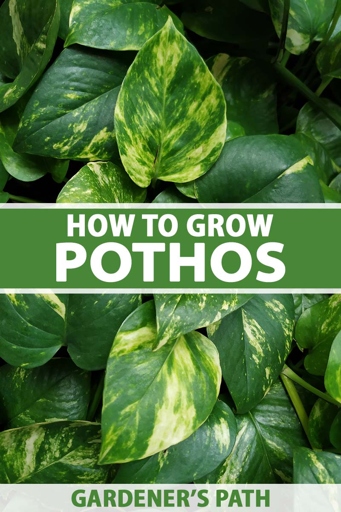
Second, increase the humidity around the plant by misting it regularly or placing it on a pebble tray. There are a few things that you can do to help your pothos plant tolerate temperature stress. Finally, make sure that the plant is getting enough light. If the plant is not getting enough light, it will not be able to photosynthesize and will eventually die. First, make sure that the plant is in a well-ventilated area.
Root Bound Pothos Not Growing
Here are 10 possible causes of pothos not growing, and solutions for each issue. If your pothos is not growing, it could be due to a number of reasons.
The plant is root bound. 1.
If the roots of your pothos are tightly bound together, it can prevent the plant from growing. Be sure to loosen the roots before replanting. The solution is to replant the pothos in a pot that is 2-3 inches wider than the current pot.
The plant is not getting enough light. 2.
The solution is to move the plant to a location that gets more light. If the plant is not getting enough light, it will not grow. Pothos need bright, indirect light to grow.
3. The plant is not getting enough water.
Pothos need to be watered regularly, but they don’t like to be waterlogged. If the plant is not getting enough water, the solution is to water it more frequently.
The plant is getting too much water. 4.
If the plant is getting too much water, it can lead to root rot. The solution is to water the plant less frequently.
The plant is not getting enough nutrients. 5.
If the plant is not getting enough nutrients, the solution is to fertilize it more frequently. Pothos need to be fertilized every month or two during the growing season.
6. The plant is not getting enough humidity.
If the plant is not getting enough humidity, the solution is to mist it regularly or place it in a humid room. Pothos prefer humid environments.
The plant is not getting enough airflow. 7.
Pothos need good airflow to prevent fungal diseases. If the plant is not getting enough airflow, the solution is to move it to a location with better ventilation.
The plant is not getting enough warmth. 8.
If the plant is not getting enough warmth, the solution is to move it to a warmer location. Pothos prefer warm environments.

The plant is not getting enough rest. 9.
Pothos need a period of dormancy in winter. If the plant is not getting enough rest, the solution is to stop watering it and allow the soil to dry out completely.
10. The plant is not getting enough love.
Pothos are known as “the plant that loves you back.” If the plant is not getting enough love, the solution is to give it more attention.
Pests
These pests can be controlled with regular applications of insecticidal soap or horticultural oil. The most common pests that attack pothos are aphids, mealybugs, scale insects, and spider mites. They can attack the leaves, stems, or roots of the plant, and can cause the plant to become stunted or even die. Pests are one of the most common problems that can cause pothos not to grow.
Scale Insects
These pests attach themselves to the leaves and stems of the plant and feed on the sap, causing the leaves to turn yellow and eventually drop off. In severe cases, the plant may die. Scale insects are one of the most common problems that can affect pothos plants.
Another is to spray the plant with an insecticide. One is to regularly inspect your plant and remove any scale insects you see. You can also try using a horticultural oil, which will smother the insects. There are several ways to control scale insects.
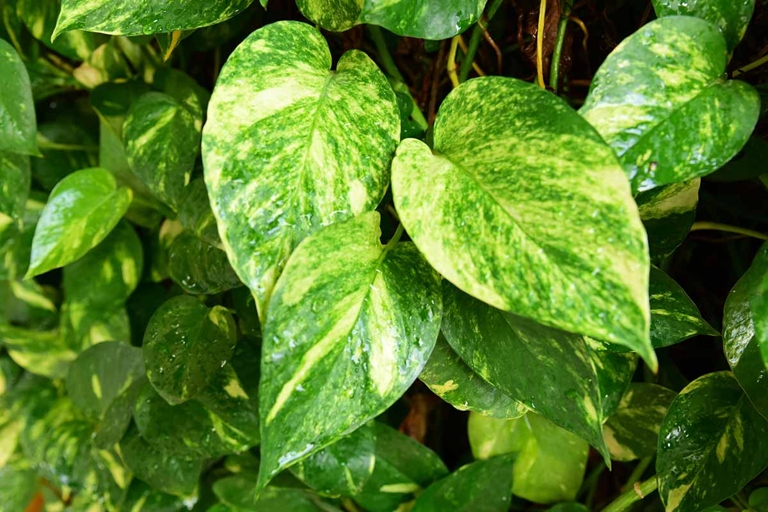
If you have a severe infestation, you may need to dispose of the plant. However, if you catch the problem early, you can usually save the plant with some patience and care.
Spider Mites
Spider mites are one of the most common pests that can affect pothos plants. Spider mites feed on the sap of plants, and they can quickly weaken and kill a pothos plant. If you think your plant has spider mites, you’ll need to take immediate action to get rid of them. These tiny pests are difficult to see with the naked eye, but they can cause serious damage to your plant.
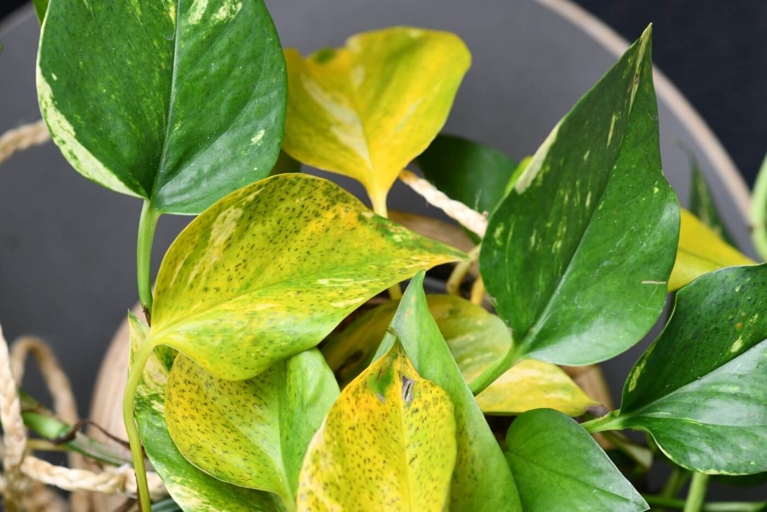
You can also try using a natural remedy, such as a mixture of soap and water. There are a few different ways to get rid of spider mites. Whatever method you choose, you’ll need to be persistent in your efforts to get rid of the spider mites. Once they’re gone, your pothos plant should start to recover. You can use a pesticide, but be sure to follow the directions carefully.
Mealybugs
Mealybugs are one of the most common pests that can affect pothos plants. Mealybugs are small, white, wingless insects that feed on plant sap. Mealybugs can be controlled with regular applications of insecticidal soap or neem oil. They can cause stunted growth, yellowing leaves, and leaf drop.
What to do If Your Pothos is Not Growing
If your pothos isn’t growing, don’t despair. There are a few possible reasons why and some easy solutions.
If your pothos is in a low-light spot, try moving it to a brighter location. Pothos need bright, indirect light to thrive. One reason your pothos may not be growing is that it’s not getting enough light.

Another reason your pothos may not be growing is that it’s not getting enough water. Water your pothos when the top inch of soil is dry. Pothos like to be kept moist, but not soggy.
Pothos prefer warm temperatures, so if your home is on the cooler side, try moving your pothos to a warmer spot. If your pothos is still not growing, it could be because the temperature is too cold.
With a little troubleshooting, you should be able to get your pothos growing again in no time.
Pruning Your Pothos
Pruning your pothos will help it to maintain a compact, full shape and will encourage new growth. Pothos is a fast-growing plant that can quickly become overgrown and leggy.
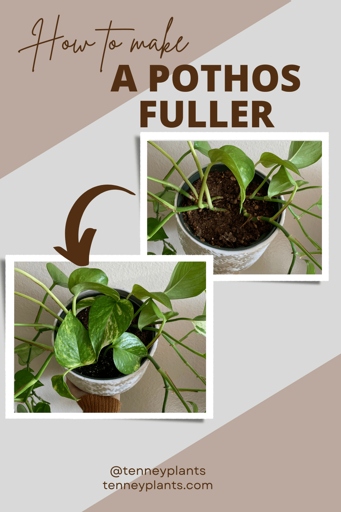
You can cut back stems all the way to the base of the plant, or leave a few inches of stem. To prune your pothos, simply cut back the stems to the desired length using sharp, clean shears.
Pruning your pothos will not damage the plant, and in fact, can actually help to encourage new growth. So, if your pothos is looking a bit overgrown, don’t hesitate to give it a trim.
Making More Plants
But sometimes, despite your best efforts, your plant doesn’t seem to be growing. If you’re a plant parent, you know the feeling of excitement when you bring home a new plant. If your pothos isn’t growing, there could be a few reasons why.
One reason could be that it’s not getting enough light. If your plant is in a too-shady spot, it might not be getting enough light to grow. Pothos need bright, indirect light to thrive.
If the soil is too wet, the roots can start to rot. Another reason could be that you’re over- or under-watering it. If the soil is too dry, the plant will start to wilt. Pothos like to have their soil moist, but not soggy.

Use a fertilizer formulated for pothos, and follow the directions on the package. Finally, your plant might not be getting enough nutrients.
If your pothos isn’t growing, don’t despair. With a little troubleshooting, you can figure out what the problem is and get your plant growing again in no time.
Reviving a Dying Pothos
There are a number of things that could be causing the problem, and there are solutions for all of them. If you have a pothos that’s not growing, don’t despair.
If your plant is in a low-light spot, try moving it to a brighter location. Pothos need bright, indirect light to thrive. One common problem is that the plant is not getting enough light.
If you think your plant is getting too much water, try letting it dry out for a week or two and then resuming a normal watering schedule. Pothos are susceptible to root rot, so it’s important to let the soil dry out between waterings. Another possible problem is that the plant is getting too much water.
This happens when the roots have nowhere to go and become constricted. If your pothos is still not growing, it could be because the roots are bound. To fix this, you’ll need to repot the plant in a pot that’s a few inches wider than the current one.
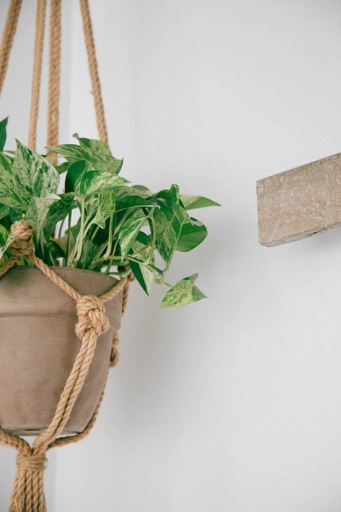
Try fertilizing it with a plant food designed for foliage plants. Finally, if none of these solutions work, it’s possible that your plant is just not getting the nutrients it needs.
Final Words
Pothos is a beautiful, easy-to-care-for houseplant that is perfect for beginners. However, even the most experienced gardeners can sometimes have trouble getting their pothos to grow. If you’re having trouble getting your pothos to grow, here are 10 possible causes and solutions.
Pothos does best in bright, indirect light. If your plant is getting too much or too little light, it will start to yellow and lose its leaves. 1. Too much or too little light.
Too much or too little water. Allow the top inch of soil to dry out before watering again. Pothos likes to be kept evenly moist, but not soggy. 2.
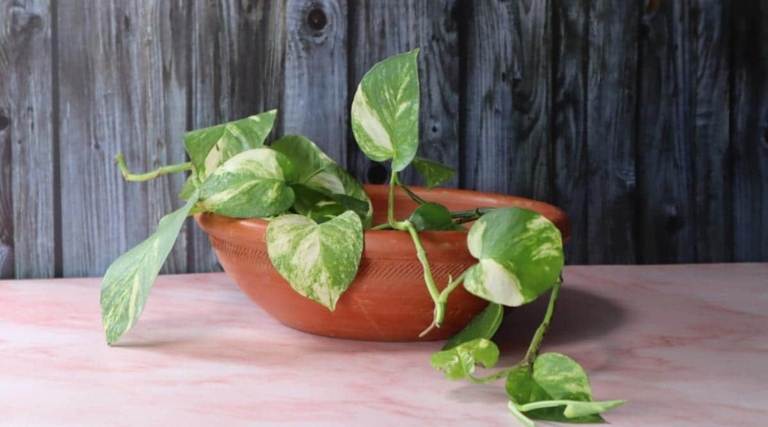
3. Poor drainage. Pothos will not tolerate soggy soil, so make sure your pot has good drainage.
Use a fertilizer formulated for houseplants to give your pothos the nutrients it needs. Nutrient deficiency. 4. If your plant is not getting enough nutrients, it will start to yellow and lose its leaves.
If you see any pests on your plant, remove them immediately. Aphids, mealybugs, and spider mites are all common pests that can attack pothos. Pests. 5.
Pothos is susceptible to a few different diseases, including root rot and leaf spot. If you think your plant has a disease, consult a professional for treatment options. 6. Disease.
Temperature stress. 7. Pothos prefers temperatures between 60 and 85 degrees Fahrenheit. If your plant is too cold or too hot, it will start to yellow and lose its leaves.
Pothos does best in a well-draining, slightly acidic potting mix. Soil stress. If your plant is in too much or too little soil, it will start to yellow and lose its leaves. 8.
Poor air circulation. If your plant is in a pot that is too small or too crowded, it will start to yellow and lose its leaves. Pothos needs good air circulation to thrive. 9.
If the air around your plant is too dry or too humid, it will start to yellow and lose its leaves. 10. Too much or too little humidity. Pothos prefers humidity levels between 40 and 60%.
If you’re having trouble getting your pothos to grow, try troubleshooting with these 10 possible causes and solutions.
Frequently Asked Questions
1. Why is my pothos not growing?
There could be a number of reasons why your pothos isn’t growing. It could be due to too little light, too much water, or not enough nutrients in the soil.
2. How can I tell if my pothos is getting enough light?
If your pothos is not growing, one possibility is that it’s not getting enough light. Check to see if the leaves are yellowing or if the plant is stretched out. If so, it likely needs more light.
3. How often should I water my pothos?
Pothos like to have their soil moist, but not soggy. Water your pothos when the top inch of soil is dry.
4. What type of soil is best for pothos?
Pothos do best in soil that is rich in organic matter. You can use potting mix or make your own by mixing equal parts peat moss, perlite, and compost.
5. Can I fertilize my pothos?
Yes, you can fertilize your pothos. Use a balanced fertilizer such as 10-10-10 monthly during the growing season.
6. What pests or diseases can affect my pothos?
Pests such as aphids, mealybugs, and spider mites can attack pothos. These can be controlled with insecticidal soap or neem oil. Diseases such as root rot and leaf spot can also affect pothos.
7. Why are the leaves of my pothos turning yellow?
Yellowing leaves can be due to a number of factors, including too much water, too little light, or nutrient deficiencies.
8. Why are the leaves of my pothos turning brown?
Brown leaves can be caused by too much sun, too little water, or pests.
9. What is the best way to propagate pothos?
Pothos can be propagated by stem cuttings or by root cuttings. To take stem cuttings, cut a 4-6 inch piece of stem with a sharp knife. Remove the bottom leaves and place the cutting in water. To take root cuttings, dig up the plant and cut a 3-4 inch piece of root. Place the root cutting in water.
10. My pothos is growing in a pot, but I’d like to move it to a hanging basket. How do I do that?
To move your pothos to a hanging basket, first choose a basket that is large enough to accommodate the plant. Line the basket with sphagnum moss and fill it with potting mix. Gently remove the plant from the pot and place it in the basket. Water well.
Final thoughts
If your pothos isn’t growing, it could be due to one of these 10 causes. But don’t worry, each one has a solution. With a little bit of care, your pothos will be back to its lush, green self in no time.
